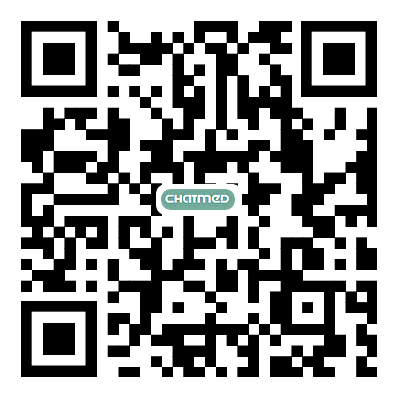E-Bulletin No. 11 - January 2023 | Wearables and Remote Monitoring in Healthcare
This week, Connected Health (CH) journal continues to share several latest articles related to Wearables and Remote Monitoring in Healthcare.
1. Title: Wearable health care system for vital signs monitoring
Authors: R. Paradiso
Type: Review
Abstract:
A new concept in healthcare, aimed at providing continuous remote monitoring of user vital signs, is emerging. An innovative system named WEALTHY is presented, where smart materials in fiber and yarn form endowed with a wide range of electrophysical properties (conducting, piezoresistive, etc.) are integrated and used as basic elements to be woven or knitted in fabric form. The simultaneous recording of vital signs allows parameters' extrapolation and inter-signal elaboration that contribute to making alert messages and synoptic patient table. WEALTHY system is implemented by integrating computing techniques, smart sensors, portable devices and telecommunications, together with local intelligence and decision support system. The system will assist cardiopathic patients during rehabilitation or subjects working in extreme stressful environmental conditions.
Access to this article:
https://ieeexplore.ieee.org/abstract/document/1222533/authors#authors
2. Title: The Future of Wearable Technologies and Remote Monitoring in Health Care
Authors: Yue Liao, Carrie Thompson, Susan Peterson, John Mandrola, Muhammad Shaalan Beg
Type: Review
Abstract:
Mobile technology has become a ubiquitous part of everyday life and is changing the way we offer clinical care and perform clinical research. We have unprecedented access to data for one's self-care as well as for sharing with health care providers. Meeting the challenge posed by the influx of wearable device data requires a multidisciplinary team of researchers, clinicians, software developers, information technologists, and statisticians. Although the possibility of what can be achieved with the ever-evolving wearable technologies seems to be unlimited, regulatory agencies have provided a framework to establish standards for clinical applications, which will also affect research applications. Clinical programs and electronic medical records vendors should prepare to establish a framework to implement these technologies into clinicians' workflow and to allow feedback to measure the impact on clinical outcome. In this article, we discuss how a new brand of multidisciplinary care is evolving around mobile health devices and present a vision of up-and-coming technology in this space.
Access to this article:
https://ascopubs.org/doi/abs/10.1200/EDBK_238919?role=tab
3. Title: Remote health monitoring of elderly through wearable sensors
Authors: Mohammed Al-khafajiy, Thar Baker, Carl Chalmers, Muhammad Asim, Hoshang Kolivand, Muhammad Fahim & Atif Waraich
Type: Review
Abstract:
Due to a rapidly increasing aging population and its associated challenges in health and social care, Ambient Assistive Living has become the focal point for both researchers and industry alike. The need to manage or even reduce healthcare costs while improving the quality of service is high government agenda. Although technology has a major role to play in achieving these aspirations, any solution must be designed, implemented and validated using appropriate domain knowledge. In order to overcome these challenges, the remote real-time monitoring of a person's health can be used to identify relapses in conditions, therefore, enabling early intervention. Thus, the development of a smart healthcare monitoring system, which is capable of observing elderly people remotely, is the focus of the research presented in this paper. The technology outlined in this paper focuses on the ability to track a person's physiological data to detect specific disorders which can aid in Early Intervention Practices. This is achieved by accurately processing and analyzing the acquired sensory data while transmitting the detection of a disorder to an appropriate career. The finding reveals that the proposed system can improve clinical decision supports while facilitating Early Intervention Practices. Our extensive simulation results indicate a superior performance of the proposed system: low latency (96% of the packets are received with less than 1 millisecond) and low packets-lost (only 2.2% of total packets are dropped). Thus, the system runs efficiently and is cost-effective in terms of data acquisition and manipulation.
Access to this article:
https://link.springer.com/article/10.1007/s11042-018-7134-7
4. Title: Patients' views of wearable devices and AI in healthcare: findings from the ComPaRe e-cohort
Authors: Viet-Thi Tran, Carolina Riveros & Philippe Ravaud
Type: Article
Abstract:
Wearable biometric monitoring devices (BMDs) and artificial intelligence (AI) enable the remote measurement and analysis of patient data in real time. These technologies have generated a lot of "hype," but their real-world effectiveness will depend on patients' uptake. Our objective was to describe patients' perceptions of the use of BMDs and AI in healthcare. We recruited adult patients with chronic conditions in France from the "Community of Patients for Research" (ComPaRe). Participants (1) answered quantitative and open-ended questions about the potential benefits and dangers of using these new technologies and (2) participated in a case-vignette experiment to assess their readiness for using BMDs and AI in healthcare. Vignettes covered the use of AI to screen for skin cancer, remote monitoring of chronic conditions to predict exacerbations, smart clothes to guide physical therapy, and AI chatbots to answer emergency calls. A total of 1183 patients (51% response rate) were enrolled between May and June 2018. Overall, 20% considered that the benefits of technology (e.g., improving the reactivity in care and reducing the burden of treatment) greatly outweighed the dangers. Only 3% of participants felt that negative aspects (inadequate replacement of human intelligence, risks of hacking and misuse of private patient data) greatly outweighed potential benefits. We found that 35% of patients would refuse to integrate at least one existing or soon-to-be available intervention using BMDs and AI-based tools in their care. Accounting for patients' perspectives will help make the most of technology without impairing the human aspects of care, generating a burden or intruding on patients' lives.
Access to this article:
https://www.nature.com/articles/s41746-019-0132-y
We hope this sharing will inspire you. Looking forward to meeting you next time in CH Bulletin.
Respectfully submitted by the Editorial Office of Connected Health





